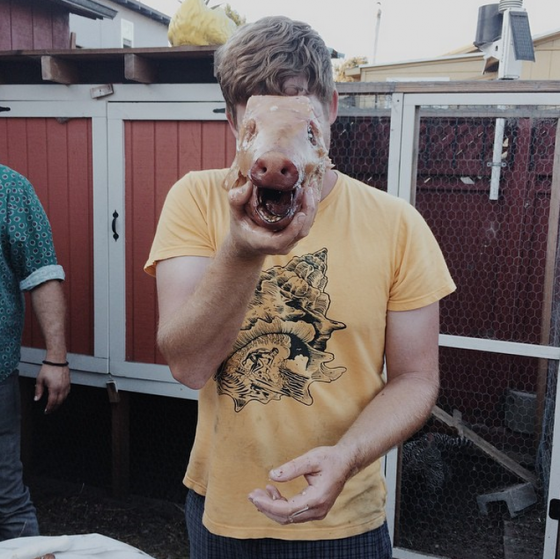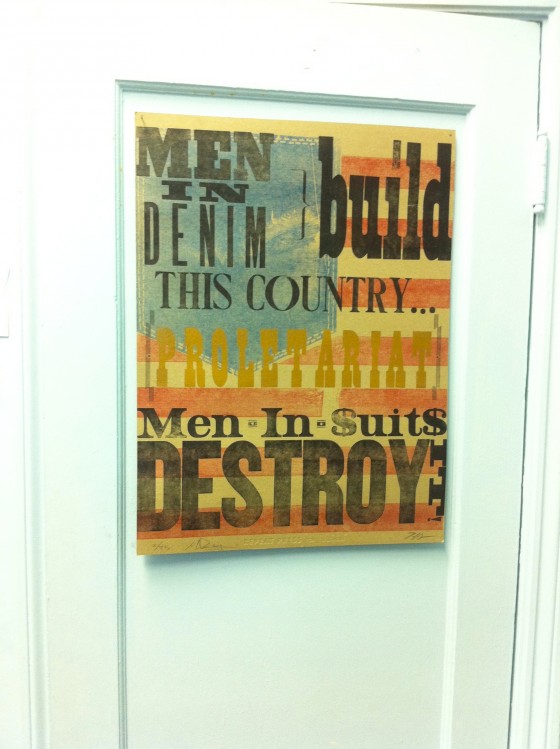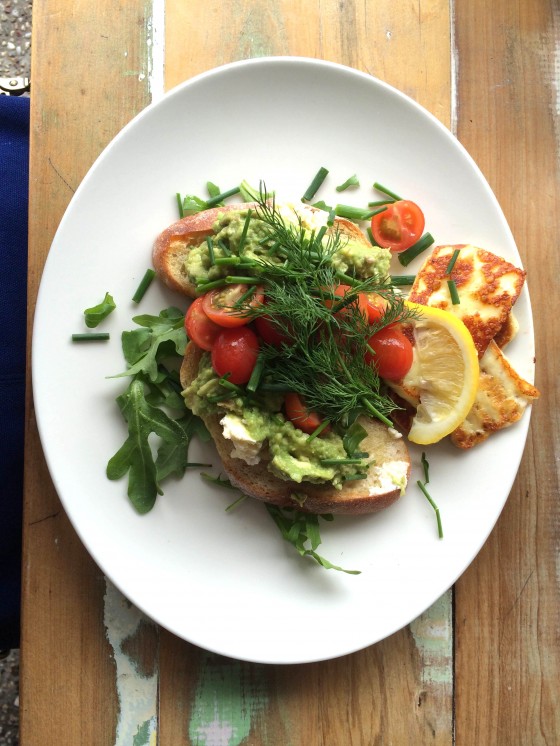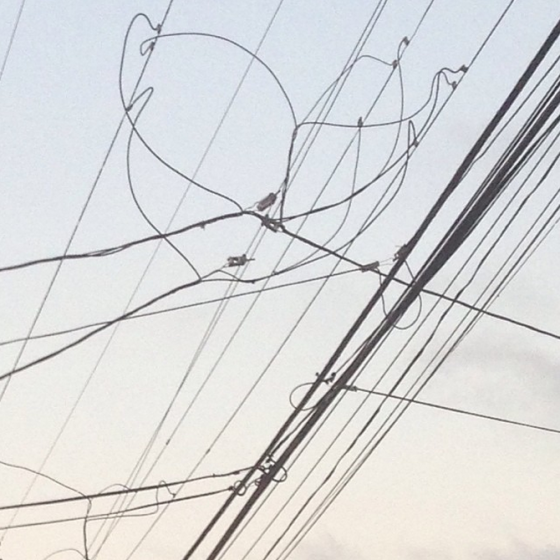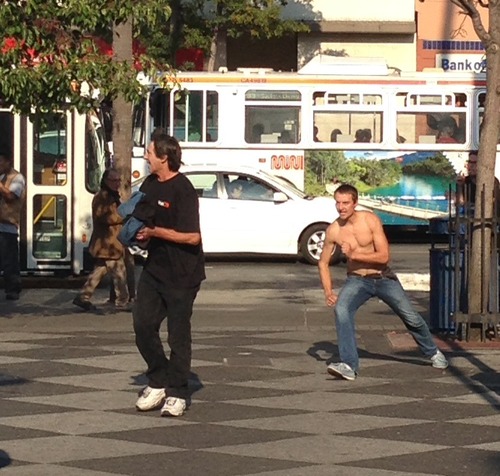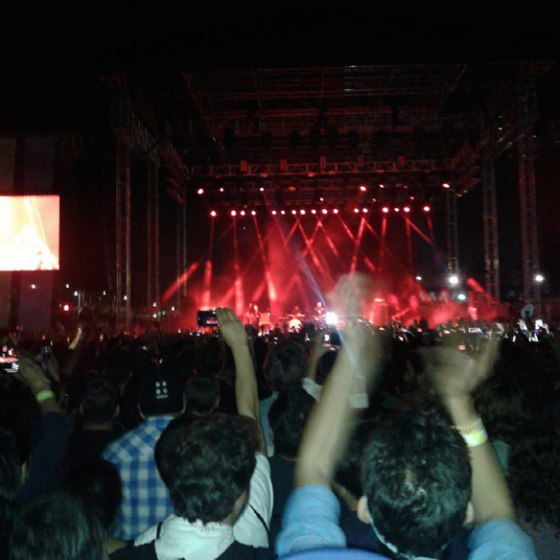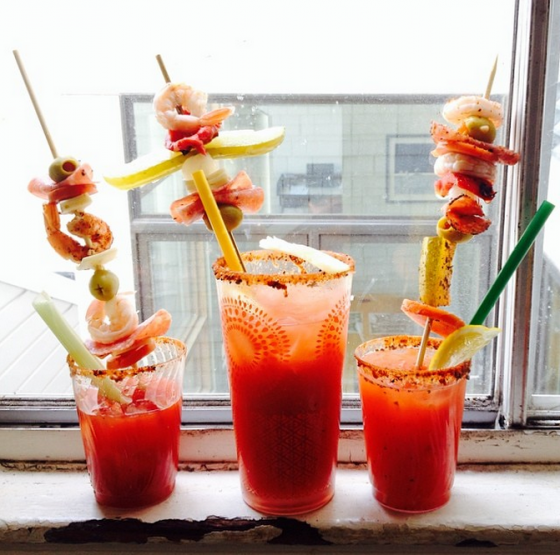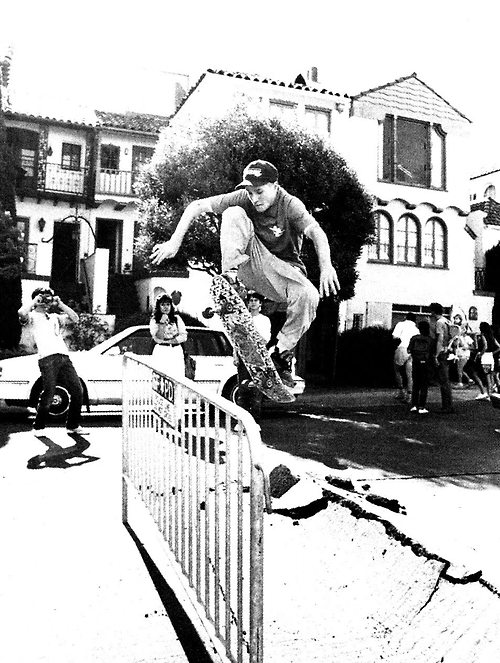[via Helen Tseng on Instagram]
It was true when cowboys and dockworkers wore denim, and it’s true now that software salesmen and startup CEOs wear denim.
Wait, whaaaaat?
Btw, this is a vintage limited edition poster by a now-defunct clothing store in Boston. (I saw it on the wall at Darn-It! here in the Mission.) Here is a video about the making of the poster:
Our pal Jess is on a mission. I thought I was doing pretty good with the $8 toast I found in LA. But Jess found some $9.50 toast. (She’s in Australia.) And now this:
To be fair, I added the haloumi which was $4, so technically it was $14.50.
To be fair, $18.50 AUS is $17.23 US. Looks like great toast! Thanks, Jess!
It’s actually two songs in one video, like that one Green Day video. Both have lots of tits:
Check out more of Dom’s work here.
We’re in a tightly packed crowd, pretty far back, for the closing set of FYF 2014 by headliners the Strokes. They’ve just finished, but we just know they’re coming back for an encore. People are starting to stream out though, and amidst the chaos, some guy shoves another guy, the other guy shoves back, the crowd parts around them. It’s gonna get real.
But then, the Strokes (off in the distance) launch into “New York City Cops” (which is poignant already for its 9/11-related history and what’s happening currently with the NYPD) and my cousin Jono (who incidentally just won an Emmy) launches into the middle of the two guys and starts *boogying down*. The tough guys that were about to fight each other look confused for a moment and then go their separate ways. The rest of the crowd swarms in around Jono and we all dance and sing and shout along to the chorus.
Anger diffused by dancing. Violence prevented by party.
Let’s rock:
So, about that earthquake. Pretty crazy, right? I mean, it even left one of the cabinet doors in my kitchen slightly more ajar than it was before I went to bed!

In a piece titled “Stop Complaining About Gentrification Unless You Know What It Is,” io9 editor Annalee Newitz looks a little deeper at the topic of the day:
Gentrification is a form of immigration, though almost nobody calls it that. People who gentrify are usually new transplants to a city, changing it to suit their particular cultural needs and whims. That’s why the criticism of gentrification often sounds like a distorted version of anti-immigrant sentiment: “They have changed our neighborhoods; their shops and homes are repulsive; we no longer feel welcome here.” The difference is that the people we call immigrants are usually not rich. Gentrifiers are.
She then looks at Istanbul and Paris, and obviously San Francisco, and eventually draws this conclusion:
When different immigrant groups struggle with each other to reshape the city, gentrification is one possible outcome. There are other possible outcomes, too. City planners can manage development so that there is enough room for neighborhoods to grow without kicking anyone out. A recent study revealed that creating income-segregated neighborhoods leads to less social mobility for everyone, cementing us into a rigidly class-divided society. More than anything, we need to prevent neighborhoods from becoming divided by class.
A first step would be to revise our attitude toward immigration in cities. Instead of seeing immigrants as aliens, we should welcome their fresh perspectives, their wealth of new cultural traditions — and yes, their cash infusions. As twentieth century cities swell into twenty-first century megacities, we must make room for all our immigrant populations, rich and poor alike. The only crime is in sacrificing one to make way for the other.
The only crime. Read on for lots more data and storytelling and relevant photos.
